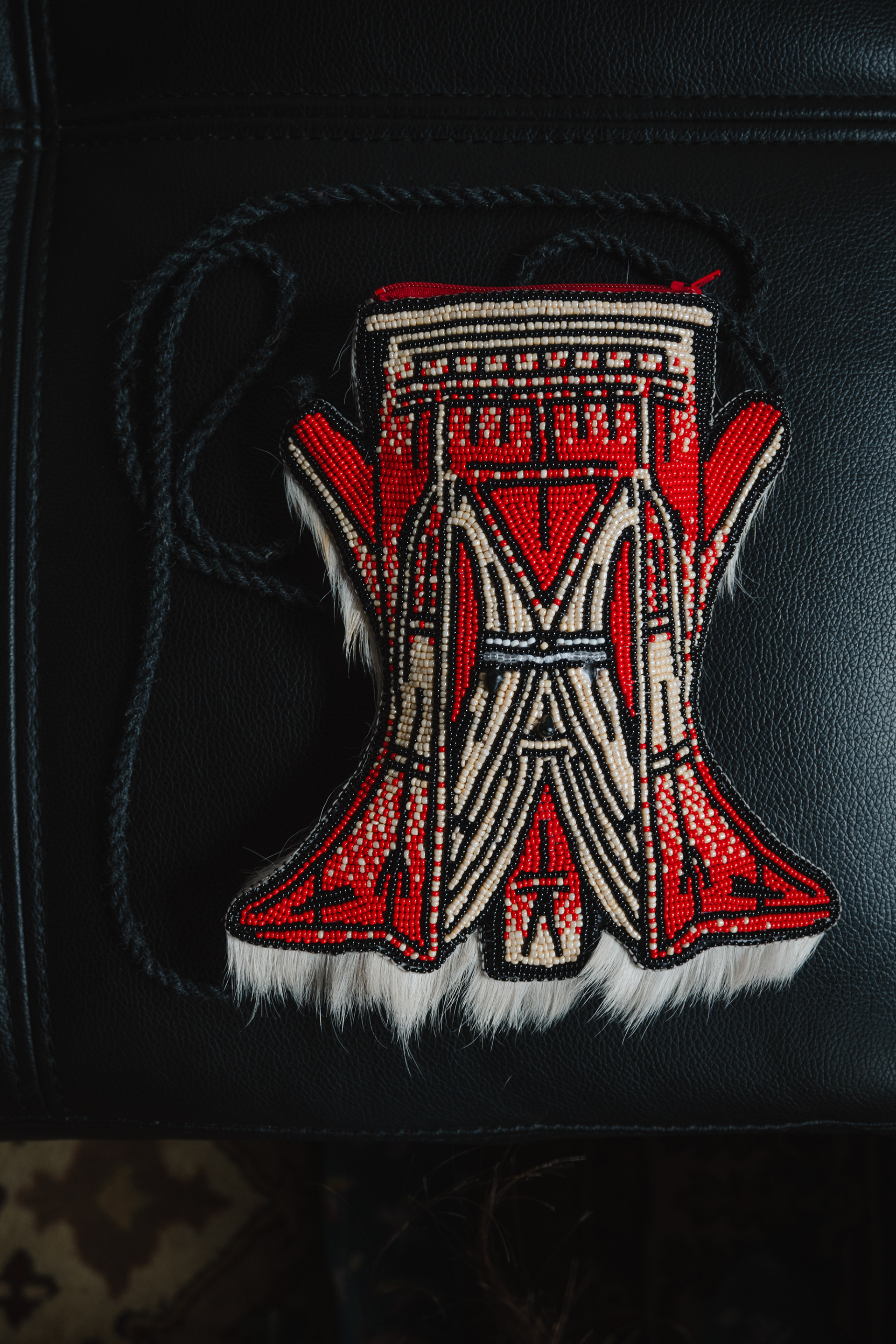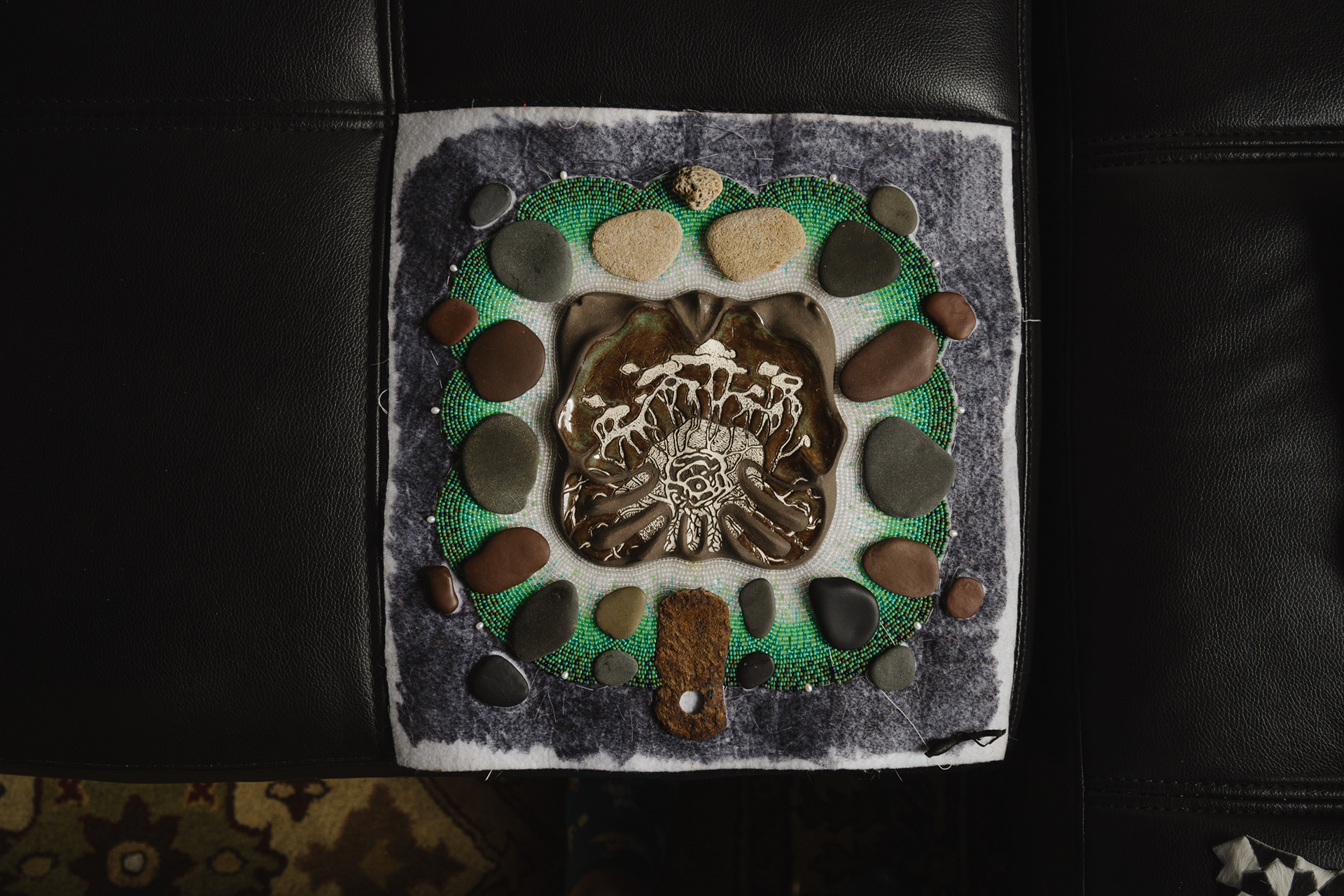Kris Waymier is an interdisciplinary visual artist who grew up in Baltimore, MD. They make colorful work fueled by memories of power grids, combining “what does not belong.” Waymire holds a BFA from New York University and has exhibited at 80 Washington Square East Gallery and Governor’s Island WetLabs.
WHEN DID YOU START MAKING ART AND USING TRADITIONAL PRACTICES WITHIN YOUR WORK?
I started actively wanting to make… [using] more traditional practices…2 or 3 years ago… I grew up knowing how to sew… but I don’t think I started pursuing it on my own a lot more until after hearing about the boarding schools in Canada… The news from Canada… it was definitely a big loss… I just started to realize I needed to figure out how to address that. I did that through research. I made a work about it, but now I’m kind of trying to get back into traditional work… I got a grant from the Wingate Lamar fellowship, for the center for craft, and I didn’t think I get the grant. So in the grant I wrote, “if I had this money to do with whatever, I’d want to go to Alaska and visit my family and just learn traditional stuff.” And then I got it. So then I went… [and] I haven’t been making new work this past year, but I’ve been traveling and visiting my family in Kivalina… learning to sew different family patterns for mukluks and things. It’s also nice to be able to reconnect to family there.
WHEN YOU GOT HERE, WERE YOU LOOKING FOR INDIGENOUS COMMUNITY OR DID YOU JUST KIND HAPPEN UPON IT?
When [the information about boarding schools started coming out]... I realized that none of my friends were as upset as me… I just didn’t have the patience to explain things and then realized I’m like “oh, I love my friends.” I love them so much but like, I actually need native friends. And I need native people to talk to. So I just started looking for it more… I had been like on the downlow looking for a little bit, but it never really panned out… Sage [Ahebah] was really my first native friend… it was nice because sage is also like a sculptor and an artist. And they’re also non-binary as well. So it was nice… It was more about being able to talk to someone else about it and feel validated… I think my friendship with Sage kind was like “oh, I feel validated and angry at this” or like “oh, yeah, that professor was racist.”
IF YOU WERE TO DO IT AGAIN WHERE WOULD YOU START?
I would immediately go to my native club at my school. Definitely.
HOW DO YOU SEE BEING IN NEW YORK INFORMING YOUR PRACTICE?
I’m a multimedia artist so in New York I definitely have access to many different types of studios. There are a lot of places I can look at art and be taken more seriously as an artist here than other places. So I guess it gives me more legitimacy and access to studios and shows.
WHAT ADVICE WOULD YOU GIVE TO AN INDIGENOUS PERSON MOVING TO NYC?
Definitely go out to events… and don’t be shy. I think people are usually a lot nicer than you think they would be. It’s kind of like putting the word out there that you’re like looking for natives, like you’ll eventually find them even if it takes a while.




